Creative Courage and the Ways We Keep Ourselves Small
on writing, body image, and expanding our perception
This piece first appeared as a guest post on Artists for Joy by
as part of her series Let Art Change Your Mind where she invites artists of all kinds to use a self-coaching exercise to shift the “lens” through which they see a creative (or life) challenge. Check out this post for an overview of the self-coaching exercise.You may read my piece below after this note about the writing process.
I went into this writing project expecting it to be fairly straightforward, but it ended up requiring a lot more time and effort (read: revision upon revision) than I anticipated. (Once you read the essay, you’ll see why I should have known better!) I had a general idea of what I wanted to say plus a few specifics, but personal writing has a way of defying our expectations. While frustrating, this is actually a gift because it’s through this struggle that even deeper insights are revealed—something that proved true for me in this case. (The four paragraphs ending with the line “For when we refuse to risk, we reject ourselves,” which I consider the climax of the essay, were only added after a least a dozen drafts!)
Because I had become intimately acquainted with Merideth’s writing style by having the privilege of editing her work for the last couple months, I was inspired to try to emulate certain aspects of it, namely the way she uses metaphor so powerfully, weaving them through multiple sections and stories, and the way she uses imagery to immerse the reader in emotional moments. Most of the writing I do these days is a bit more conversational or instructive, so aiming for this slightly more lyric style required me to flex writing muscles I haven’t used much in a while. It was a a fun challenge, but a challenge nonetheless.
One aspect I struggled with in particular was how to begin. At first, I had the section about lying in bed and imagining myself small opening the piece. But eventually I realized that would be confusing to the reader because the piece was primarily about my experience with resistance on my writing retreat. So I had to find a new way to begin, which meant writing a bit of new material since nothing else I had served to grip the reader in the way I wanted the first lines to do. Then I had to figure out where to put that opening section. I ended up deciding to cut what had been the longest section—about the intense anxiety I felt during my first writing session—in half and insert that flashback/reflection about body image in the middle.
I also worked hard to cut this piece down to size. Originally, I had been aiming for about 2500 words total, but the piece had a mind of its own. Even though I didn’t get it close to that goal, I cut probably at least 500 words in the last few edits, and the work I did still served to make the prose tighter and the piece, therefore, better. As I tell my students, it’s ok if your essay is over the suggested word count, but the longer it is, the more concise I’ll expect it to be. This piece simply could not be 2500 words, but my efforts to get it closer to that were not in vain.
Though it’s not perfect, I’m really proud of the way this piece turned out and even more proud of the person I see myself becoming in the scenes I share within it. I hope you’ll give it a read and that it inspires and challenges you (in the best way) to face your own self-imposed limitations with unapologetic courage.
Let me know in the comments what resonated most for you, and if you too struggle with writing resistance, be sure to scroll to the bottom of this post to learn about a workshop I created to help with just that.
As I locked the door behind me with that resonant click of the deadbolt, a violent surge of emotion tore at my chest and poured in rivulets down my face.
I had a whole week to myself in the Berkshire mountains for a solo writing retreat/vacation—a dream come true and a break I desperately needed. And yet . . . tears, so many tears. And I never cry.
How cruel, I thought, that parenthood does this: requires us to rip ourselves away from our families in order to connect with ourselves because otherwise we are swallowed up body and soul by the vortex of love for our children.
In my 9.5 years of being a mom, I’ve learned there’s always a sense of emptiness and confusion when I get away for an extended time (basically anything over eight hours). There’s a vacuum, visceral and aching. What do I do when no one needs me? What do I want? Who am I when I’m no longer defining myself in relation to others?
It typically takes about 24 hours for my sense of self to slowly expand into that space, to claim it, inhabit it fully. Tentative as the foxes I spent an afternoon with in the field later that week, my sense of agency creeps back into consciousness when it’s given room to roam.
Only then do I realize how very small it had become, how small I had become, pressed under the exquisite weight of my children’s needs.
.
.
.
This time, I found my rhythm fairly quickly, spending the mornings drinking coffee on the sun porch and reading, getting out during the day—for a hike, a canoe ride, a trip to town for internet and supplies—taking a swim in the afternoons. One day, rainy and cool, I made a fire and re-organized the eclectic and mostly ancient collection of books, wiping away decades of dust, discovering treasures. Layers of anxiety and confusion fell away, allowing me to reconnect with a self I’d all but forgotten.
But the writing part did NOT go as planned. I’d thought this retreat would finally give me the time to make significant progress on my novel, the one that normally languished near the bottom of my priority list.
I sat down the first afternoon to write for an hour (my “reasonable” daily goal), ready to watch a chapter take shape on the page fully formed and gorgeous. And as soon as I pulled up the document, a tsunami of dis-ease crashed over me, taking me completely by surprise.
All my ideas were wrong. The sentences I forced out seemed like they’re written by a third grader or, alternately, by an undergraduate trying way too hard, and each one felt like torture. Inside, my soul was screaming.
When I finally allowed myself to step away, I stumbled onto the screened porch and collapsed on the day bed, curling into the fetal position. My mind raced. I was convinced this meant I couldn’t do it—couldn’t actually write, at least not the novel I’d been dreaming about for years. Despite my training and all my expertise as a teacher of writing, I couldn’t actually write myself, at least not anywhere close to a level that would be “good enough.” I was a fraud. I wanted to crawl inside my cave of misery and never come out.
.
.
.
As a teenager, I used to lie in bed at night imagining myself small. I would feel the pressure of my body against the mattress and imagine that the sum of my flesh was petite, perhaps even slender—the word I wished would fit my curvy, muscular form but did not, could not, never would.
I would visualize this alternate reality so intensely that I would almost believe I really was the diminutive, thin girl who would win the word “cute” as a descriptor. That I was no longer the big-boned, wide-hipped woman who stood eye-to-eye with most of the boys and wore pants sized ignominiously with double digits. That I was, therefore, loved and accepted, no longer feeling the persistent need to apologize for taking up too much space in the world.
Eating, particularly anything sweet, often felt like a spectacle. I fought the urge to hide the rare snickers bar I enjoyed (or not so much), sensing the unseen eyes judging me for adding to the mass of my body, to the layer of fat cloaking my more ideal form. I refused to consciously give in to the cultural pressure that commodified women’s bodies (language I picked up in my Women’s Studies classes in college), but it still stung when I overheard a housemate criticizing my nightly bowl of ice cream in relation to my size.
I tried to convince myself I was indifferent to their judgment, that I loved my body just the way it was. But I only succeeded in ignoring the powerful emotion behind my instinct to hide, to shrink, to fit into the box I thought would guarantee my safety—the box that would make me no longer threatening (to whom?) and therefore no longer at risk.
The world is full of boxes, isn’t it?
Full of black and white lines that promise success or happiness or at least approval. Instructions for what to do and not do, want and not want, be and not be in order to earn the moniker we crave: good, beautiful, smart, faithful, sweet, successful, and so on. If only we say the right things, wear the right clothes (and in the right sizes), earn high enough grades, produce obedient enough children, sacrifice our needs enough for others—then we will be safe from the fear that haunts us.
Except that we’re not.
In fact, the harder we try to meet those requirements, the more afraid we become. Because it only takes one misstep, a single toe over the line, for it to all be taken away.
The boxes drawn by these arbitrary and ever-changing lines form not walls of protection but walls of isolation. They become a fortress that separates us from others and from ourselves.
A fortress of shame, inside of which we shelter ourselves not from disapproval but from joy.
.
.
.
I lay on that couch a long time, watching the sun go down over the hills, letting my emotions settle like leaves to the bottom of a lake.
A word emerged to define what I’d felt: shame. I’d wanted to hide, to shrink, to run and never let anyone know how miserably I’d failed—how my misery revealed my true identity as a failure.
Naming it gave me courage,1 for I knew how to battle shame.
Brené Brown tells us that “shame derives its power from being unspeakable” and that “shame cannot survive empathy.” She teaches us that the way to defeat shame is to bring it into the light of a loving other, to do the opposite of what it makes us want to do (hide) and instead share vulnerably.
So I resolved not to hide or deny my experience but to explore it, starting by writing about it in my journal, later sharing my struggle with trusted friends.
I also began working through The Artist’s Joy chapter by chapter, one or two each morning, including some of the exercises. (Admission: I usually read and then don’t do exercises in books, but I determined to engage with this one. Plus, they were so inviting and some so simple that it felt doable.)
As I read and journaled, I found myself struggling with the book’s thesis that making art should be joyful. I had expected that first writing session to be joyful and abundant, and so I’d interpreted my difficulty as a sign that something was very wrong. But what if I had simply expected it to be difficult?
I wanted writing to be quick, easy. (Otherwise, how would I ever finish my novel, given how little time I had for writing?) I felt my skill and technical knowledge should make that possible (despite rarely attempting fiction in recent years). But expecting to sit down at my laptop and have a novel, fully formed or even remotely coherent, fall out of my brain onto the page was like staring at an empty field and screaming, “I want sunflowers!”
Perhaps writing, like growth, is always a slow and somewhat painful process, I thought. Perhaps embracing the pain is essential. Perhaps the goal is not to replace it with joy but, rather, to accept the discomfort as part of growth, as an athlete does with muscle pain, and let it co-exist with joy.
I could think, “Oh! There’s that discomfort again. I must be doing good work.” How different my thoughts would be then! And with different thoughts come different feelings. After all, it’s those secondary feelings that cause the anguish, that turn discomfort into pain and pain into suffering.2
Still, the joy Merideth wrote of called to me. Even for top athletes, it’s not all pain and not cripplingly intense, or if it is, they’re on the path to injury and burnout, right? Discomfort is one thing; part of maturity is learning to tolerate discomfort and push past uncertainty. But when it tips into pain, that’s usually a sign that something needs to shift.
But what?
.
.
.
Two days later, my aunt came to stay for a night, and we slipped out for a walk in the field that afternoon during a break in the rain. She named many of the flowers and shrubs we saw: mountain laurel, viburnum, pinkster azalea, meadow lily, spiderwort, asters, goldenrod, evergreen winterberry, low-growing wild blueberry. Drops of water clung to the tops of blond grass heads, each one a world. Birdsong floated above us, the eponymous chicka-dee-dee-dee and the more melodic calls of Baltimore orioles, robins, and goldfinch, which she also identified for me.
When we’d tramped our way to the far side of the field, she paused to point out the copper beech tree that grew on one side of a massive ash, its deep purple leaves tinged with rusty orange striking against the green backdrop. She’d planted it 30 years before as a six-inch-tall seedling. All that time it had been growing, battling the shrubbery, inching its way skyward. Now it stood a majestic 40 feet high, still dwarfed by the native trees around it, but holding its ground, sharing its vivid color with the world.
Later, sitting with The Artist’s Joy open on my lap, I gazed at that beech and thought about its slow growth. Slow—by whose standards? What seemed slow to us, I thought, was not slow for that tree. It had no sense of hurry, no fear of not growing fast enough, no press of “too late” crowding in on its process.
Maybe, I thought, mind now on my novel, slow is good. Maybe slow is strong.
.
.
.
On my last full day, a couple I’d met at the local church service came over for a swim and dinner. Both had MFAs in creative writing and were actively working on their own books, his tentatively nonfiction and hers semi-autobiographical fiction, much like mine aimed to be.
The woman and I had recognized one another as kindred spirits after only a few minutes of conversation the day before. I’d shared that I was working on a novel but finding it hard to make progress, and I could see recognition dawning on her face as I recounted the questions of craft, positioning, and process that plagued me, her features communicating “we are alike, you and I” more powerfully than her voiced agreement ever could.
As soon as they climbed out of their car into my driveway, my soul recognized them as old friends, even though I’d never seen their faces until 30 hours prior.
That evening shines, sunlit, in my memory: the bracing swim bravely pursued despite the chilling wind and rain-cooled lake water; the hour spent lying on the raft as the sun dried us, talking about faith and family, books and beauty; the late-setting sun beyond the porch windows gilding their faces while we ate pasta and sipped wine; the foxes that darted across the lawn at dusk as if summoned by my tale of having grazed on blueberries together the day before.
I shared about the anxiety I’d felt when I’d tried to write the first day, the still-hard but not torturous progress I’d made after that, how the book didn’t fit neatly into any genre categories and would be difficult to traditionally publish even if I did manage to write it. How I kept wondering if I should compromise my creative vision to fit the book into existing categories, or if, instead, I should embrace the “blue ocean strategy” of creating something to occupy an empty but (I thought) much-desired niche.
They shared their own struggles, how he was becoming convinced that his fear of offending people was keeping him stuck, how she’d been working on her novel for three years already, and it was only now starting to take shape after two complete re-writes. How writing felt intensely difficult some days for them, too, despite their prestigious training.
With each point of similarity, I felt my shame growing weaker, my anxiety lighter. I felt the world of my creative self expanding, my hope buoyed up on the flood of their unforced fellowship.
When I shared that I often wondered if my doubts were a sign that I didn’t have the right narrative focus yet and should change it (or if it was just normal “hardness” that’s part of the creative process), they asked me to tell them the plot. So I did. I started out fairly embarrassed by how trite the ideas sounded, apologizing for how long it was taking, but as they nodded and pondered and asked for more detail, my confidence grew. When I shared the climax and resolution, they leaned back in their seats and said the words every author longs to hear: “I would definitely read that book.”
After they’d left, headlights disappearing into the darkness of deep night, I sat down at my laptop. Even though it was past time for sleep, I couldn’t contain my excitement for my project. My novel had been transformed by the affirmation of these near strangers, their belief in my project infectious, building a ladder on which I could climb out of the pit of my self-doubt.
Where only days before I had felt crippling uncertainty, I now felt an eager anticipation built on confidence—confidence not that every word and idea would be earth-shatteringly perfect but that the project was inherently valuable, that my instincts were generally good, and that any difficulty I might meet was utterly unremarkable.
I typed away for close to an hour that night, the scene I’d been working on unfurling beneath my fingers. I sat tall in the creaking chair, my soul stretched wide like wings, carrying me deeper into myself.
.
.
.
That last morning, still glowing from the evening’s abundance, I decided to try Merideth’s Lens Shifting exercise.
I flipped through several of the dusty art books I’d found while reorganizing, looking for an image to capture my attention. Then I saw her, strangely out of place in a book on Matisse. Amid the colorful abstract images for which Matisse is known lay a woman rendered in warm but subdued earth tones. Nude, she sits on a table facing the viewer, her gaze direct, her posture erect. Her body is all roundness, the light, streaming in from a window at the right, throwing each curve into stark relief. It may have had something to do with the fact that her shape echoed my own at her age, but the image called to me.3
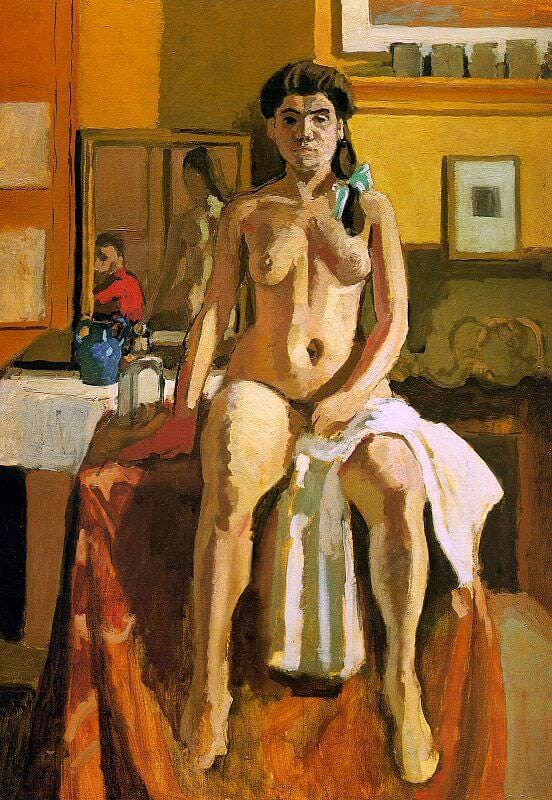
I gazed at this woman and found myself there in turn-of-the-century Paris, my caramel skin marking me as exotic but also inferior, my body so ripe as to make modesty impossible. But then, rather than shrinking into the shadows, I decide to embrace my form—myself—and to sit, brazenly exposed for this strange but somewhat famous artist.
Her face shows no emotion—neither the timidity I would have felt nor the coyness one might expect from a young woman comfortable posing in the nude. Eschewing both extremes, she appears calm, alert but relaxed. The upright frontality of her pose belies any sense of overt sexuality. She’s just there, herself, her body, unadorned and unconcerned.
In a word: unapologetic.
One of the phrases I’d written down to describe my previous “lens” regarding my novel was “embarrassingly slow.” What if, I thought, I accepted that my pace is my pace? What if there is no such thing as slow or fast or on time?
“Carmelina,” for that is the painting’s name, and therefore, I presume, the woman’s as well, clearly felt no rush. How many hours did she sit there while Matisse painted? What would it feel like, I wondered, to write with the intrepid patience she embodies, echoed in the bold strokes of the painter’s brush? I felt my heart ease at the idea.
Curious, I read the one-page explication opposite the image and learned that this painting emerged from what is considered Matisse’s “darkest moment,” a time when he wrestled with the direction he would take his work. The blurb called it “thoroughly conventional” and “regressive”—adjectives no artist wants to hear.
I was shocked by this criticism of a painting I’d just spent 20 minutes admiring, me who rarely connects with visual art. Yet that too spoke to me.
Matisse, too, struggled to find his path, to block out the clamor of critiques (real or imagined) and create what called to him.
The critic also speculated that this painting may “have helped Matisse to abandon certain insecurities concerning the styles of the past.” What “insecurities concerning styles of the past” (or conventions of genre) might I need to abandon in order to embrace the form my novel must take? I found it comforting to think that an artistic giant like Matisse had navigated his own version of my current struggle, that agonizing self-consciousness that crushes creativity and stifles innovation. Perhaps that is why Matisse famously said, “Art takes courage.”
My mind flitted back to a quote I’d underlined in The Artist’s Joy: “There is space for everyone. But you can only claim your space and feed your soul if you stay true to your artistic vision” (135).
There is space for me, I thought. There is space for my novel. Maybe not on the existing shelves in conventional bookstores, but what if I don’t have to confine my vision to their neat, artificial categories? What if, by writing my book—my book—I could break down some of those walls for others too, revealing great fields of creative possibility they had previously only glimpsed through cracks and half-forgotten dreams?
But it takes courage to claim that space, to push through the fear of failure towards the inevitability of criticism. To step outside your carefully constructed castle of safety and color outside the proverbial lines. To stand (or sit) artistically naked before the world and say, “This is me. This is my heart, my self, and I believe it is good. Do with it what you will.”
Yet the alternative is, for the artist, no alternative at all, for it means retreating behind the walls of shame, resigning ourselves to a life devoid of color, drained of meaning. In our self-imposed prisons, we are safe, perhaps, from the sharpest pangs of vulnerability, but we are by no means protected from pain. Instead, we guarantee only that no real joy can reach us, coming as it does on the wings of love.
Perhaps joy, then, is a product of courage.
Perhaps it all comes down to one simple choice: will you risk rejection by showing up with your true self, or will you guarantee it by not showing up at all?
For when we refuse to risk, we reject ourselves.
.
.
.
That afternoon, when I’d finished packing and cleaning the house, I went down to the lake for one last swim. I stood dripping on the sunbaked raft, the weathered wood softly variegated beneath my feet. My body felt strong and sure, the curves of my hips and thighs beautiful in the slanting light.
In that moment, I saw my form as itself a work of art, one needing no apologies.
What would it look like, I wondered, to adopt an unapologetic posture toward not just my body, not just my writing, but my life? Where was I still making myself small, instead of claiming the space I needed? Where was I still holding on to shame, allowing it to barricade my heart from the joy of true connection, both with myself and with others?
I didn’t have all the answers just then, but I had found the right questions, which was far, far more important. The answers would come in time, those, too, growing slow but strong into the soil of my soul.
I stretched my arms wide to encompass the entirety of the lake, of the place, of that week of wonder and discovery, and then I dove into the unbroken blue of the water and struck out with sure strokes for the shore.
Have you faced powerful resistance when working on a creative project? If nothing else, I hope this essay helps you feel less alone.
Resistance—creative block, writer’s block, anxiety, imposter syndrome . . . it goes by many names—is a ubiquitous experience for creatives, no matter how well trained, successful, or experienced they are. Unfortunately, it doesn’t go away with more experience or accolades, not entirely. What changes, though, or at least what can change is how well we do at navigating those feelings when they arise.
If you’d like to learn a better way to approach your writing goals, how to effectively move through resistance, and how to cultivate a thriving, joyful writing routine, I created a training just for you. It’s called Wake Up Wanting to Write: Turn Your Dread into Desire and Double Your Daily Word Count. It’s a a 2-hour, workshop to help you uncover your blocks, get unstuck, and fall in love with writing again.
As I explore in the piece above, I’ve encountered a LOT of resistance with writing, especially writing the project I care most about, which left me discouraged, confused, and ashamed for years—and not making much progress. So, I went on a quest to discover what was going on and how to change the narrative. I’ve done a lot of soul searching, and I've received coaching from not one but two amazing creativity coaches. The insights have been profound.
Now, I’m finally making real progress toward my writing goals WITHOUT the soul-sucking pressure and shame that’s haunted me for so long. For the first time in years, I can’t wait to keep working on my novel, and I know exactly what to do when resistance does come up. I’m going to teach you my exact process in the workshop students have called “life-changing.”
For only $27, you’ll get access to the workshop recording + a 30-day writing plan and 4 weeks of email support with weekly self-coaching exercises.
Here’s what Lynne had to say about it:
“I am halfway through the replay, Mara, and I just wanted to say, It's FABULOUS! I can already tell it will be life-changing for me!! Thank you!”
It’s now well established that simply naming our negative emotions makes them feel less intense. Known as “affect labeling,” finding language for those uncomfortable feelings engages the rational part of our brain and is the foundation for emotional intelligence.
As I wrote in this piece, “There is a difference between pain and suffering. Pain is a sensation, one we cannot avoid in this life and generally cannot control. Suffering, in contrast, is our reaction to that pain and therefore is entirely within our control. Suffering occurs when we feel we are experiencing pain unjustly, unnecessarily, and seemingly unendingly. We can choose to let the inevitable pain of life produce suffering, or we can accept that pain as a reliable if unwelcome companion on this journey—and stop being surprised and indignant when it shows its face once more.”





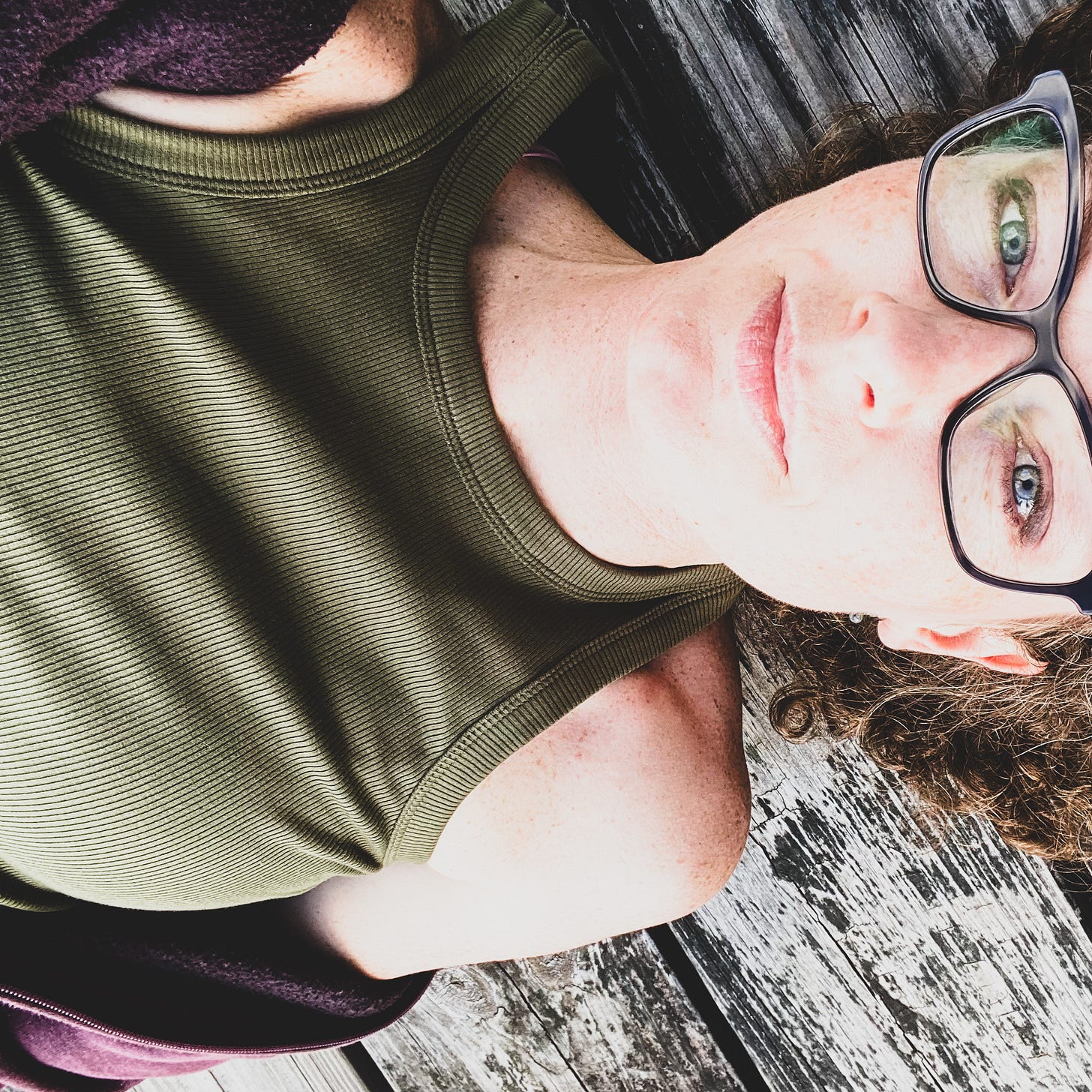
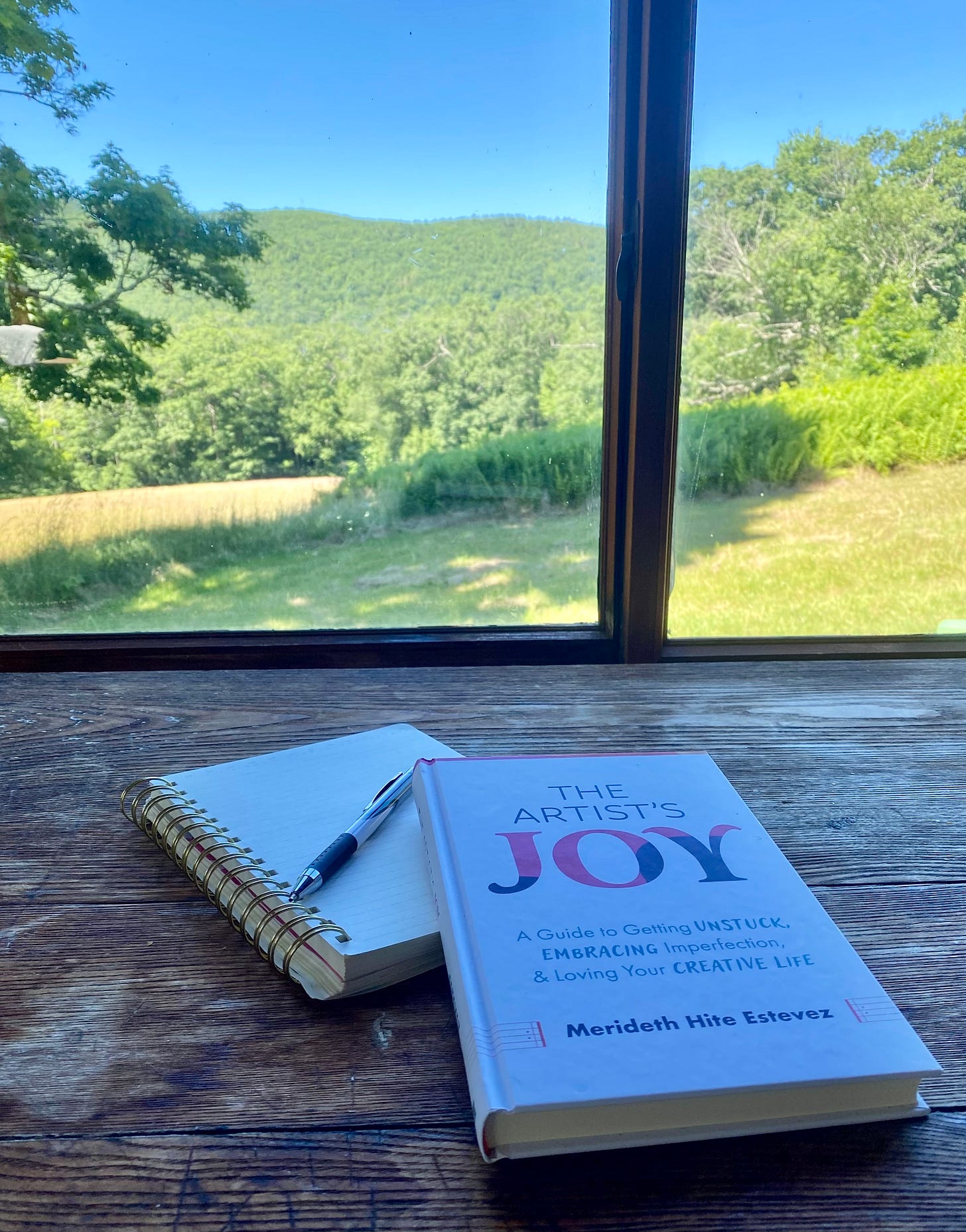
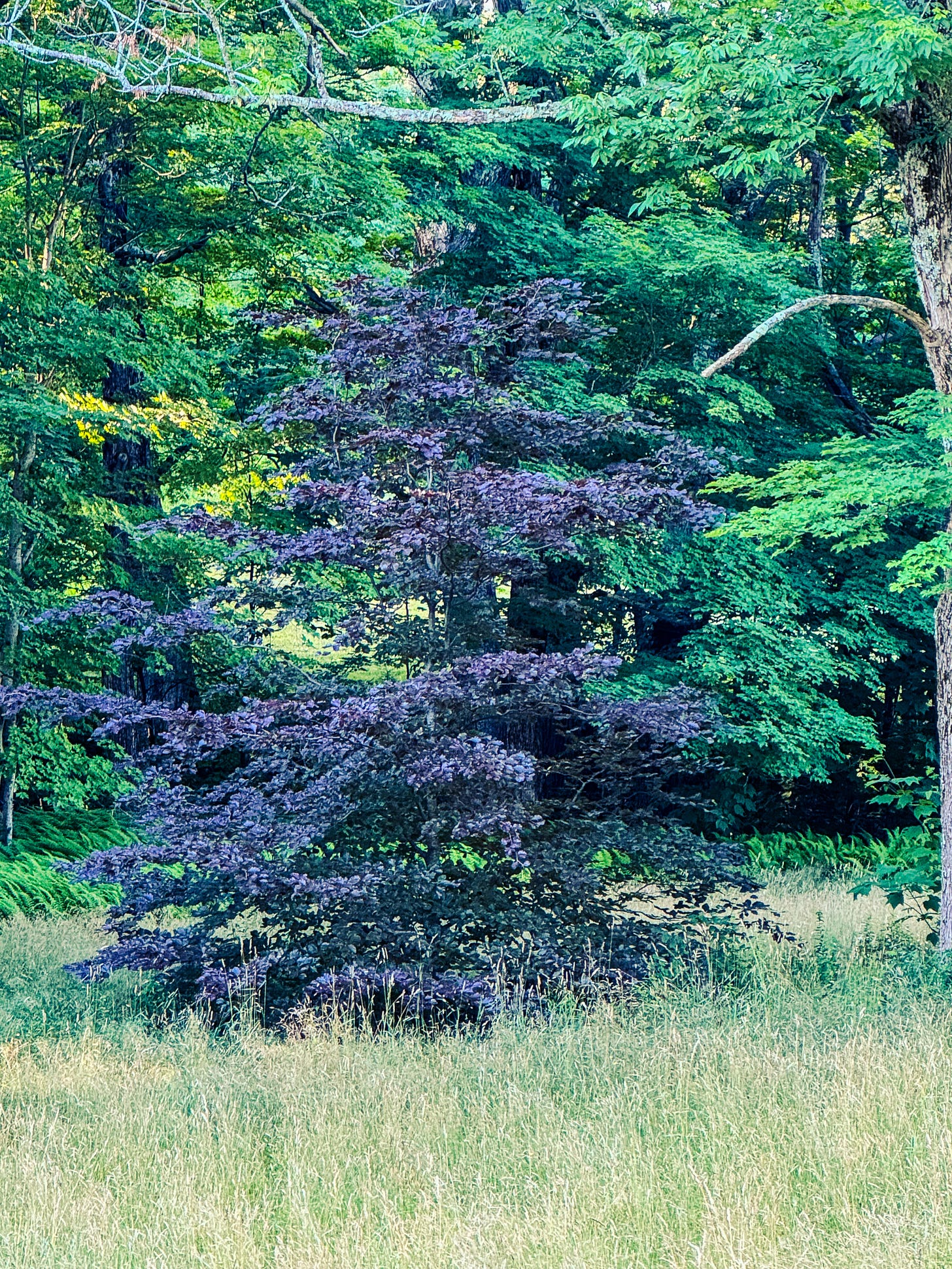
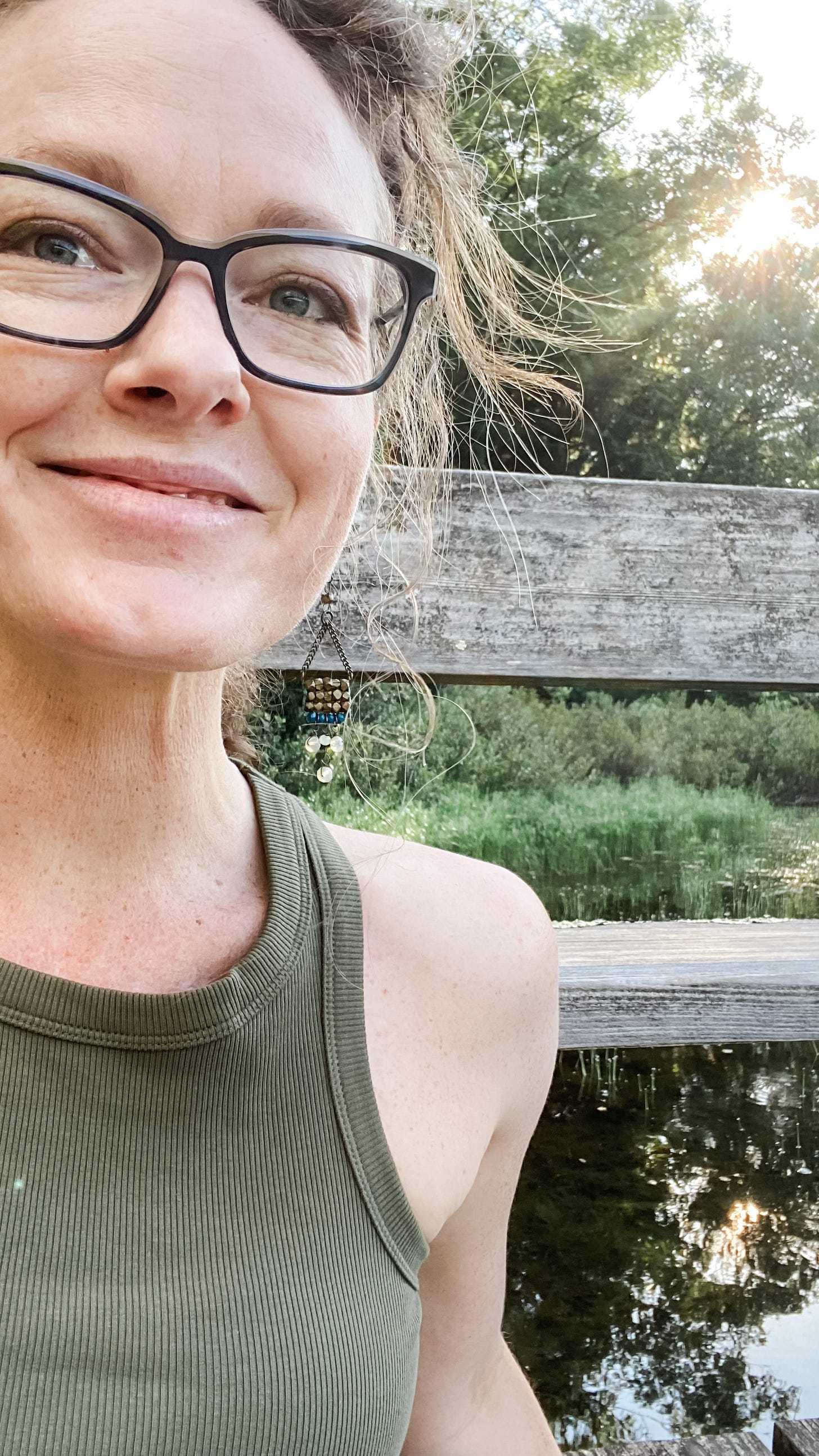

Beautiful essay. So much resonated with me. In fact setting out to create and write a “blue ocean” provided the biggest bout of imposter syndrome. Honestly it still aches, seeing that ocean become a little more purple these days? What could have been if I persevered? If so much life didn’t get in the way? Questions and non-answers I pondered for a long time. And then came the next idea. ❤️